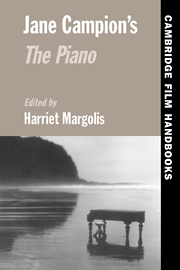Book contents
4 - Ebony and Ivory
Constructions of Maori in The Piano
Published online by Cambridge University Press: 16 January 2010
Summary
INTRODUCTION
For the international members of Jane Campion's cast and crew, as well as many of the Pakeha members of the local cast and crew, the shooting of The Piano had a profound personal effect. For the film industries of Aotearoa and Australia, The Piano was also profoundly significant, for it showcased “down under” skills and locations on the international film market. For the Maori actors involved, The Piano offered work and income. For Jane Campion, The Piano provided an opportunity to explore her passion for filmmaking. However, for Maori people, The Piano offered little more than a 1990s expression of colonial ideologies and the reinforcement of limited representations of Maori people. “Colonisation has not ceased; it continues through the capture of our images.”
Not surprisingly, the film's release in Aotearoa brought with it a surge of articles here on what was considered the positive impact of its international exposure for the local film industry. In contrast, critical analysis of the film was limited, with only two clearly unfavorable analyses appearing in the first months following its release. Debate over “ownership” of the film and the filmmaker's national identity has also taken a lot of space in discussions of the film, primarily about whether The Piano is an Australian or New Zealand production.
Who owns The Piano? Where does Jane Campion “belong”? How does she identify? The notions of “identity” and “nation-hood” point to a wider debate that is raging in colonized Pacific countries such as Aotearoa.
- Type
- Chapter
- Information
- Jane Campion's The Piano , pp. 114 - 134Publisher: Cambridge University PressPrint publication year: 1999



